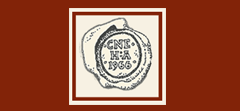Abstract
Although colonial Dutch gravestones appear in the archaeological record decades later than English gravestones, evidence suggests that New Netherland colonists and their descendants knew of and used grave markers prior to the 1664 conquest by the English. Various factors, such as development pressures, neglect, misidentification, and the likelihood that many were made of wood, have all contributed to the loss of the earliest markers. The oldest surviving colonial Dutch gravestones date between 1690 and 1720, with the most common types being the trapezoidal, tablet, and plank- and post-like forms. It is highly likely that these types are a legacy of New Netherland period wood and stone grave marker styles.
Carvers such as John Zuricher helped to bring the artisanal sandstone markers of the New York and New Jersey carving tradition to the Dutch. The tradition was known for its carved iconography; most common early on were death’s heads, a mortality symbol that had long been known to the Dutch. The winged cherub superseded the death’s head by the 1750s, which coincided with a period of increased gravestone production and the diffusion of the carving tradition. Marker inscriptions provide additional insight into colonial Dutch identity and culture during the mid- to late 1700s. For example, the practice of married women retaining their maiden names continued in some areas, but is not uniformly distributed throughout the region.
DOI
10.22191/neha/vol43/iss1/2
Recommended Citation
Richards, Brandon
(2014)
"Hier Leydt Begraven: A Primer on Dutch Colonial Gravestones,"
Northeast Historical Archaeology:
Vol.
43
43, Article 2.
https://doi.org/10.22191/neha/vol43/iss1/2
Available at:
https://orb.binghamton.edu/neha/vol43/iss1/2


